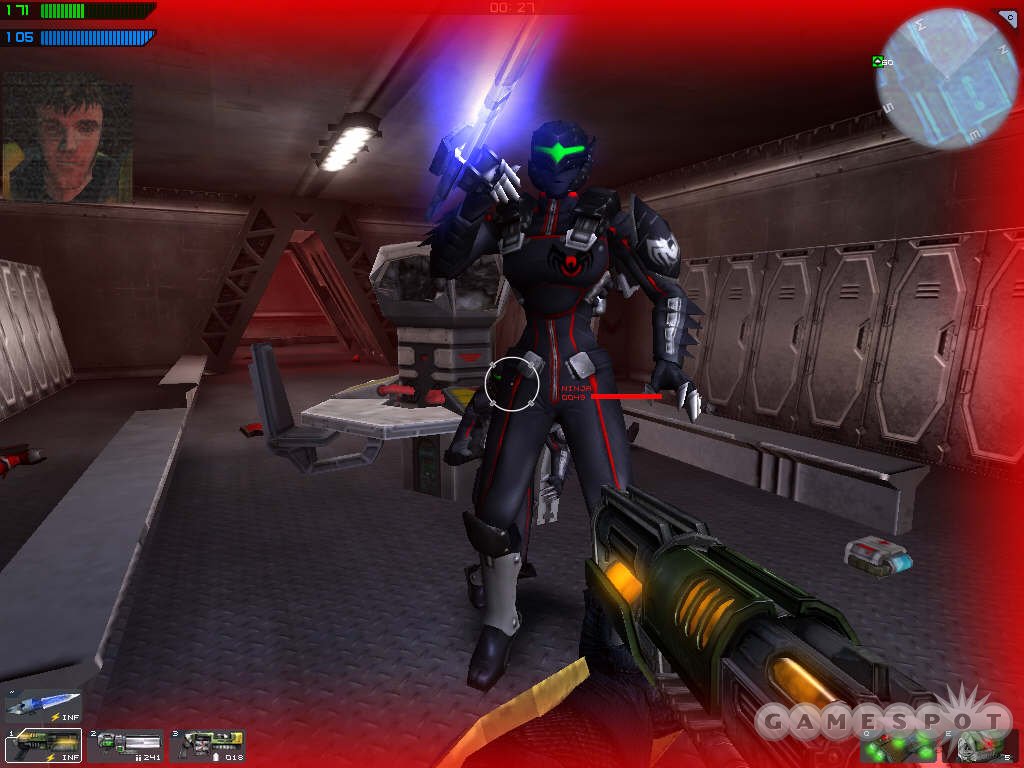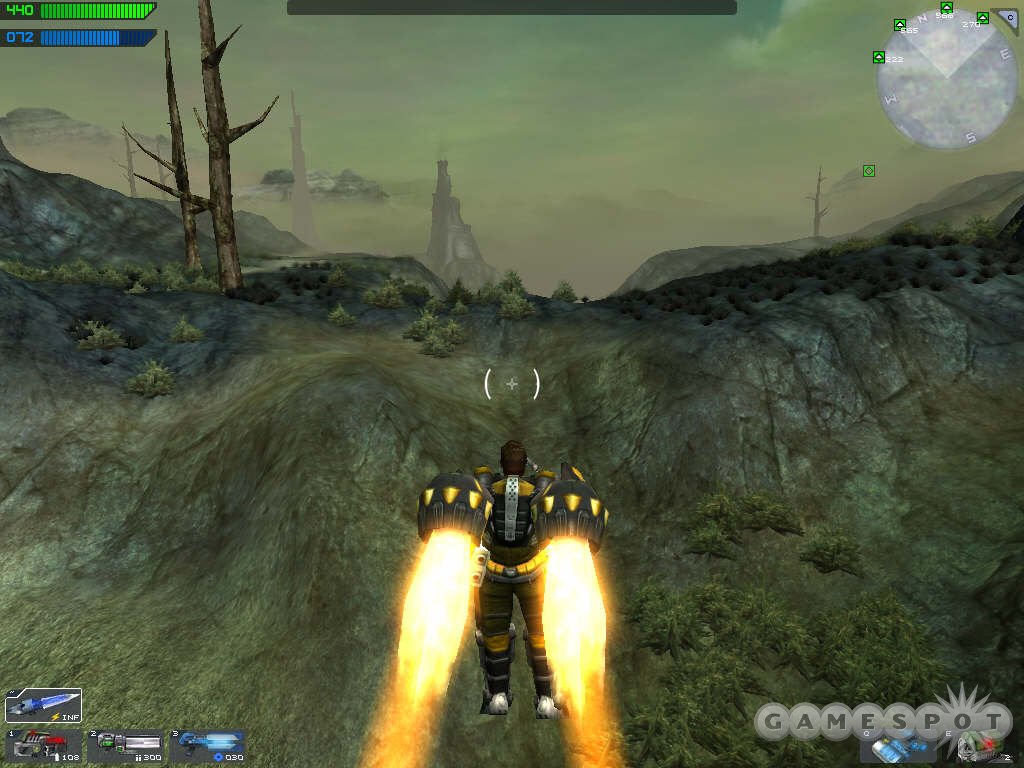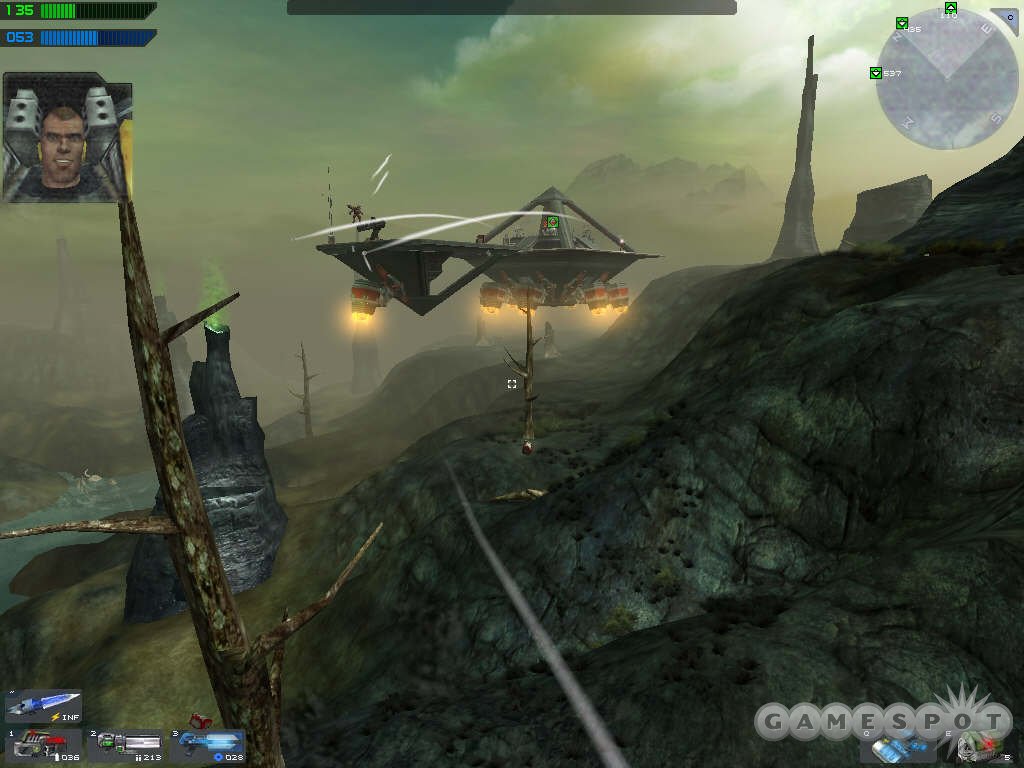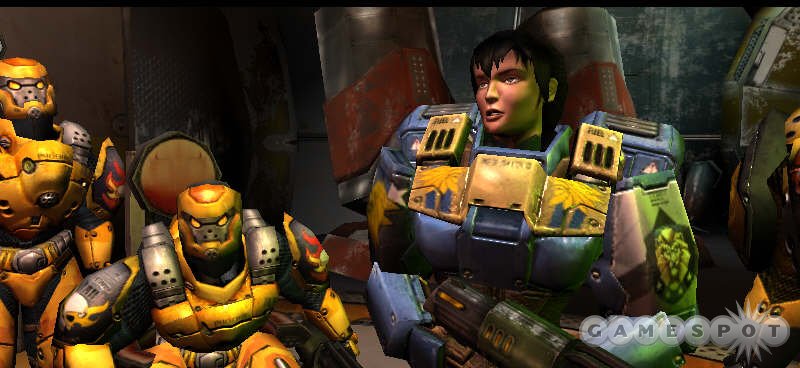The original Starsiege Tribes was a landmark game for the first-person shooter genre. Combining huge maps, deep team-based multiplayer mechanics, jetpacks, and drivable vehicles, Dynamix' imaginative game laid the groundwork for the design of many of today's most popular multiplayer shooters, including the Battlefield games and Unreal Tournament 2004. The sequel, Tribes 2, was hampered by serious bugs upon launch and it disappointed many players in the Tribes community. Although the game was patched later and modded to a great degree by third parties, the damage was already done, and Dynamix was disbanded shortly thereafter. The development of the next Tribes game on the PC was then handed over to Irrational Games, best known for developing another classic first-person game, System Shock 2. The good news for Tribes fans is that Irrational's stewardship over the Tribes license is a resounding success. Tribes: Vengeance effectively captures the spirit of the original game, and adds a surprisingly good single-player campaign to a deep and addictive multiplayer component.

The inclusion of a story-based, single-player campaign is new to the Tribes series. Though the documentation of the original games included a good deal of futuristic backstory describing the different factions, the games themselves were strictly multiplayer affairs, with no real story development occurring in-game. The story of Tribes: Vengeance centers on two generations of imperial princesses, Victoria and her daughter Julia. The game's missions are structured so that you are shifted back and forth through time, and you play the missions through the viewpoints of a number of different characters aside from the imperial royalty, including two brothers in the Phoenix tribe and a mysterious cybrid assassin. Along the way you'll learn about the conflict between the imperials and a couple of the tribes (the Blood Eagles also play a big role in the plot), uncover a vile conspiracy, and discover a dark secret harbored by Victoria. The plot twists end up being fairly predictable, but you'll still feel compelled to play through the campaign, thanks to some solid mission design.
Longtime first-person shooter fans won't find many design aspects in the campaign of Tribes: Vengeance that they haven't seen before. There are plenty of scripted sequences and multistage missions, for example. But the variety of environments and mission types should keep most players interested. There are, of course, massive outdoor landscapes, which you can explore easily using jetpacks, which are a hallmark of the Tribes games. The campaign also has plenty of indoor levels to explore, such as an imperial palace and a massive underground base. The variety in the campaign extends over to the mission design. One mission has you playing as an adolescent Julia, forced to defend yourself when the imperial palace is under attack by tribes. You'll have to evade at the outset, as little Julia can't carry weapons, but eventually you'll be able to climb into a fighter craft and turn the tables on the invaders. Another level has you playing as a cybrid assassin stalking a vast map dotted with Phoenix tribe installations. You'll knock these out as a one-man wrecking crew before infiltrating the underground areas of the base.

The interiors of many levels are designed to take special advantage of Tribes' nuances, specifically the jetpack. You'll find a lot of multitiered rooms, which will test your jetpacking proficiency, as well as rooms with rounded-off floors, which can be used for "skiing"--another Tribes convention where you can combine the momentum gained by gravity and the properties of your frictionless boots to launch yourself into the air with tremendous velocity. So while the overarching design of the missions isn't totally original, the special nuances that were worked into the level and mission design give the single-player aspect of the game a truly Tribes-like feel, and keep it from feeling generic. On the whole, Tribes: Vengeance's campaign is quite good, and it should keep most players busy for about 10 to 12 hours. Newcomers to the franchise will also find it a useful tutorial for multiplayer, as you're introduced to all the different weapons, armor types, and vehicles, as well as various game types throughout the campaign.
While the single-player campaign is more than competent, the multiplayer aspect of Tribes: Vengeance is still the primary selling point of the game. It features a good amount of content out of the box, as well as a refined implementation of the tried-and-true mechanics that made 1999's Tribes game a hit. Maps support up to 32 human players, though it's a bit unfortunate that there's no option to play with or against computer-controlled bots. The base game type of Tribes: Vengeance, as in previous Tribes games, is capture the flag. Each of two teams has control of a complex base. Bases include sensor arrays, stationary turrets, inventory stations (for respawned players to pick up different armor and weapons), vehicle-spawning stations, and generators to power all these items. Successful teams have to manage not only offense and defense with regard to the flags, but also make sure that all base equipment is in good working order. This turns out to be an intense and interesting endeavor in Tribes: Vengeance.
It's possible, for example, to cripple the other team by destroying their generator, which would knock out all their equipment. At any given moment in a Tribes match, dozens of players are working on a variety of different tasks, such as base defense, repairs, driving a vehicle, or capturing the other team's flag. Fragging the other team members is purely incidental to these other important tasks. Adding to the mayhem are the jetpacks that each player is equipped with. Though many of the game's 15 multiplayer maps are quite large, players who are good at jetpacking and skiing can traverse the largest map in but a few heartbeats, even faster than if they were in a vehicle.

It's worth noting that some simplifications have been made to the formula in Tribes: Vengeance compared to the previous games in the series. Vehicles, for instance, are no longer selected and purchased from consoles. Instead, they spawn periodically from vehicle pads. However, the minor tweaks don't significantly change or detract from a proven and addictive multiplayer gameplay design.
Aside from capture the flag, four other multiplayer modes are available, including ball, where each team scores by capturing and throwing a ball into a guarded goal, and rabbit, which is flag keep-away. Fuel is arguably the most interesting mode, where each team must venture into the field and collect fuel canisters for deposit at their base. Each team death subtracts one unit from the team depot, and the first team to a specified unit count wins.
Irrational has tweaked the arsenal of weapons in Tribes: Vengeance compared to previous games. The trusty mortar, chaingun, grenade launcher, and spinfusor (a disc launcher much like a standard first-person shooter rocket launcher) are still present and should be familiar to Tribes veterans. But there are a couple of brand-new weapons and updates to previous weapons. The rocket pod is a gun that fires off six spiraling rockets that have limited tracking ability--stay aimed on a big vehicle or cluster of enemies and the rockets will home in on that spot. A new grappling hook adds plenty of new tricks. Players can latch onto friendly vehicles and catch a ride, while the underground cavern map provides opportunity to sling your way quickly across terrain like Spider-Man. The sniper rifle has been tweaked a bit, requiring not just energy from your jet pack, but separate ammunition as well. This keeps would-be snipers from sniping out in the field forever without resupply. What hasn't been changed is the overall balance between weapons. Every gun has its purpose, and they all have a satisfying feel when used.
The hierarchy of armors--light, medium, and heavy--remains pretty much the same. As you'd expect, light armor allows you the fastest movement and the least protection, while heavy armor offers very slow movement but additional defense and ammunition for your guns. Certain weapons are also restricted by ammo type, such as the sniper rifle only being available for light armor. There are also only four vehicles in Tribes: Vengeance. On the ground there's a fast buggy that serves as a mobile inventory station, and a jump tank, which has a big cannon, a machine gun, and limited jump-jet capability. In the air, there's a one-man fighter craft that maneuvers much like a helicopter, while a three-man assault ship is also available, with side-mounted cannons and powerful bombs. Like most of the weapons, these vehicles each are interesting and useful in certain contexts, but do not seem overpowering.

The presentation in Tribes: Vengeance is excellent. Powered by a modified Unreal engine, player and vehicle models offer a ton of detail, and weapon models in hand look extremely intricate, with many moving parts. Explosions look and sound very satisfying, particularly because of a physics engine that scatters numerous parts when firing wildly inside of a room. There are also some nice rag-doll effects when you kill enemy players with a large explosion. The vast terrain you see in certain maps looks great, and it is realistically detailed with foliage, rolling hills, and other landscape features. From high points, you'll also be able to see for quite a ways, although the draw distances don't quite rival Far Cry's. Cutscenes are done in-engine, and while the character faces have a claylike look, everything animates smoothly, and the voice acting is surprisingly decent overall.
By combining a good single-player campaign with a multiplayer component that effectively captures everything that made the original Tribes a classic, Irrational Games has succeeded in creating a shooter that offers something for every first-person shooter fan to enjoy. The spirit of the franchise remains intact in Tribes: Vengeance, from the thrilling speed of jetpacking and skiing to the depth of the team-based action in multiplayer. The game's excellent presentation is merely the icing on the cake for a game that excels in just about every aspect.